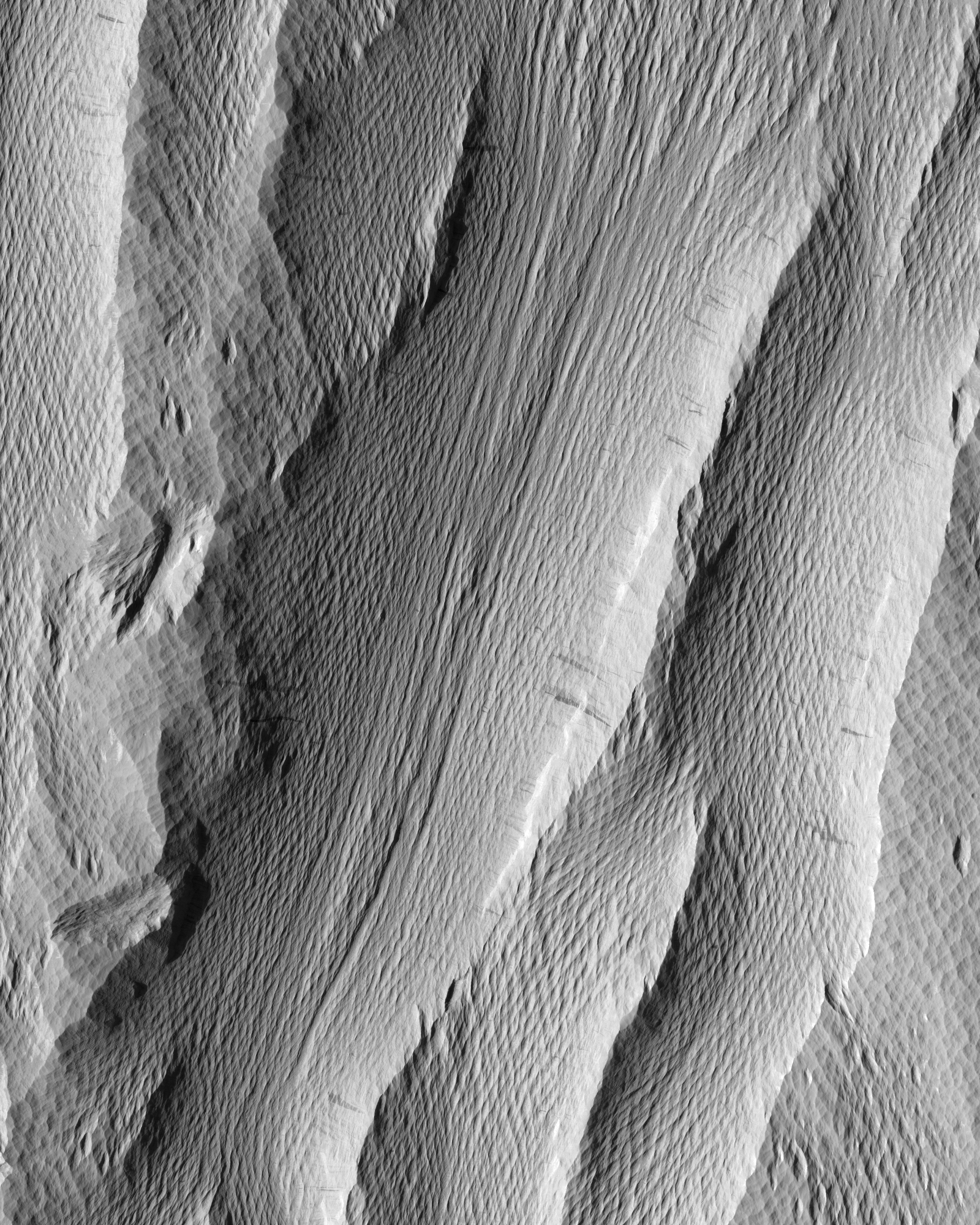On Mars the wind carves stream channels

The spire in Eberswalde crater
October 10, 2016
Dunes and rock hurdles in Gale crater (3D)
November 7, 2016
A Piece of Mars: This 1.6×2 km (1×1.24 mi) scene mostly shows what wind will do to fine-grained, weakly-consolidated surfaces. It has created topography that further strengthens wind scour in the hollows, which even leave kilometers-long grooves reminiscent of water-carved streams. If this were Earth I’d guess they had been carved by water first. But this is Mars, where the wind is in charge. (HiRISE ESP_046504_1785, NASA/JPL/Univ. of Arizona)




2 Comments
I’ve had a long look at the full HIRISE image that shows thousands of streaks widely distributed on slopes. My contention that sand/dust avalanching can’t help to explain them in this case depends on how sure we can be that there’s no regolith present. There do seem to be many streaks in places where the scalloped pattern of the bedrock surface appears sharp, as if it were bare. There are many small streaks that fit entirely within an individual pit. However, where there are concentrations of larger streaks there seems to be a greater likelihood that the pitted texture appears somewhat less clear. There’s one unique basin with lots of large streaks along the east (right) margin of the full image, about one third from the bottom, where a finer scale of texture is visible that could be ripples in sand overlying the rock. So its not so clear that the presence or absence of fines over the bedrock is irrelevant to the occurrence of streaks. It may be that the streaks create a regolith of fines over geologic time if their content accumulates faster than the wind removes it.
I’ve commented here in the past that Curiosity hasn’t seen enough aeolian sand movement to explain how dunes in Gale Crater could be moving meters in a year. At that time a few months ago Curi had seen none. But now that’s changed. Over the last 30 sols (from 1474) there have been multiple sol to sol changes to sand near the rover, not ripple migration, but several clear comings and goings of thin sand on rock. One phenomenon: it seems that the APXS while placed overnight has intercepted moving sand, now on a few occasions, but most impressively creating a complete ring of sand that appeared on sol 1475. There have also been a number of changes that don’t appear related to rover activity.
I’ve seen a lot of images of slope streaks. These ones seem to be of the widely common variety and varying ages, judging by the range of colors, from fresh and dark fading to light. I don’t remember having ever seen an image of slope streaks in a landscape that appears to be entirely covered by exposed bedrock. Most occur on slopes that appear to be covered in fines. One of the basic debates about slope streaks considers whether or not they can be explained by sand or dust avalanching. In this case I guess the sand/dust avalanche possibility is ruled out from the start, as there’s nothing there but solid rock. What is that streak stuff that seems able to come forth from the bedrock at multiple point sources?